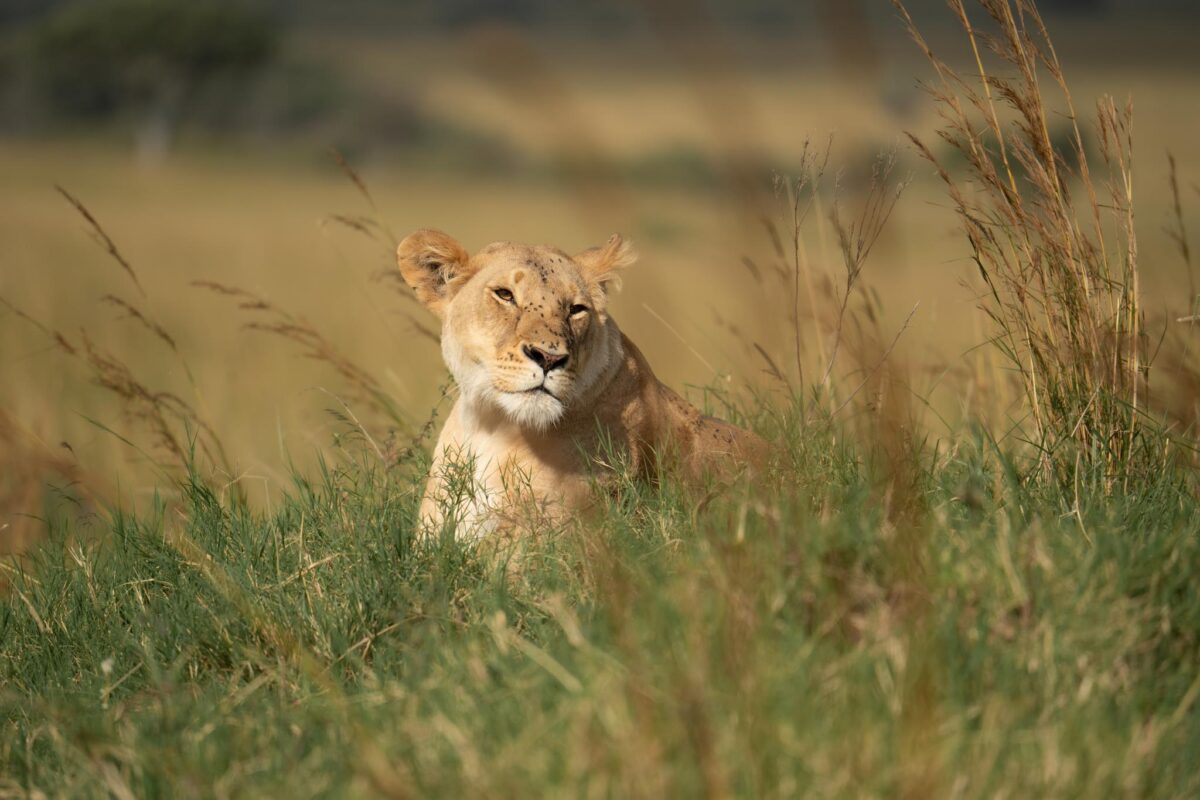The blog title got you, huh? Budget safari in Kenya and Tanzania sounds too good to be true. But before you equate budget with cheap, let me be real with you. Safaris in Africa are generally pricey.
The good news? There are plenty of budget-friendly ways to experience one of the world’s most incredible adventures. And coming from me, a budget traveler from the Philippines, you can bet I’ve found the most practical ways to make it happen. That should add a little credibility, don’t you think?
Now, going on a budget safari in Africa is really doable. But you’ll need to let go of some of the fancy comforts that come with luxury safari tours. Still, the trade-off is absolutely worth it. You get the same once-in-a-lifetime safari experience, just without the hefty price tag.
In this guide, I’ll share what to expect from a budget-friendly safari in Kenya and Tanzania, and how to plan one that won’t disappoint. 🙂
In case you missed it, I have published a few travel blogs about my safari in Kenya. Will publish a few more about Tanzania. Still lots of incredible experiences to share!
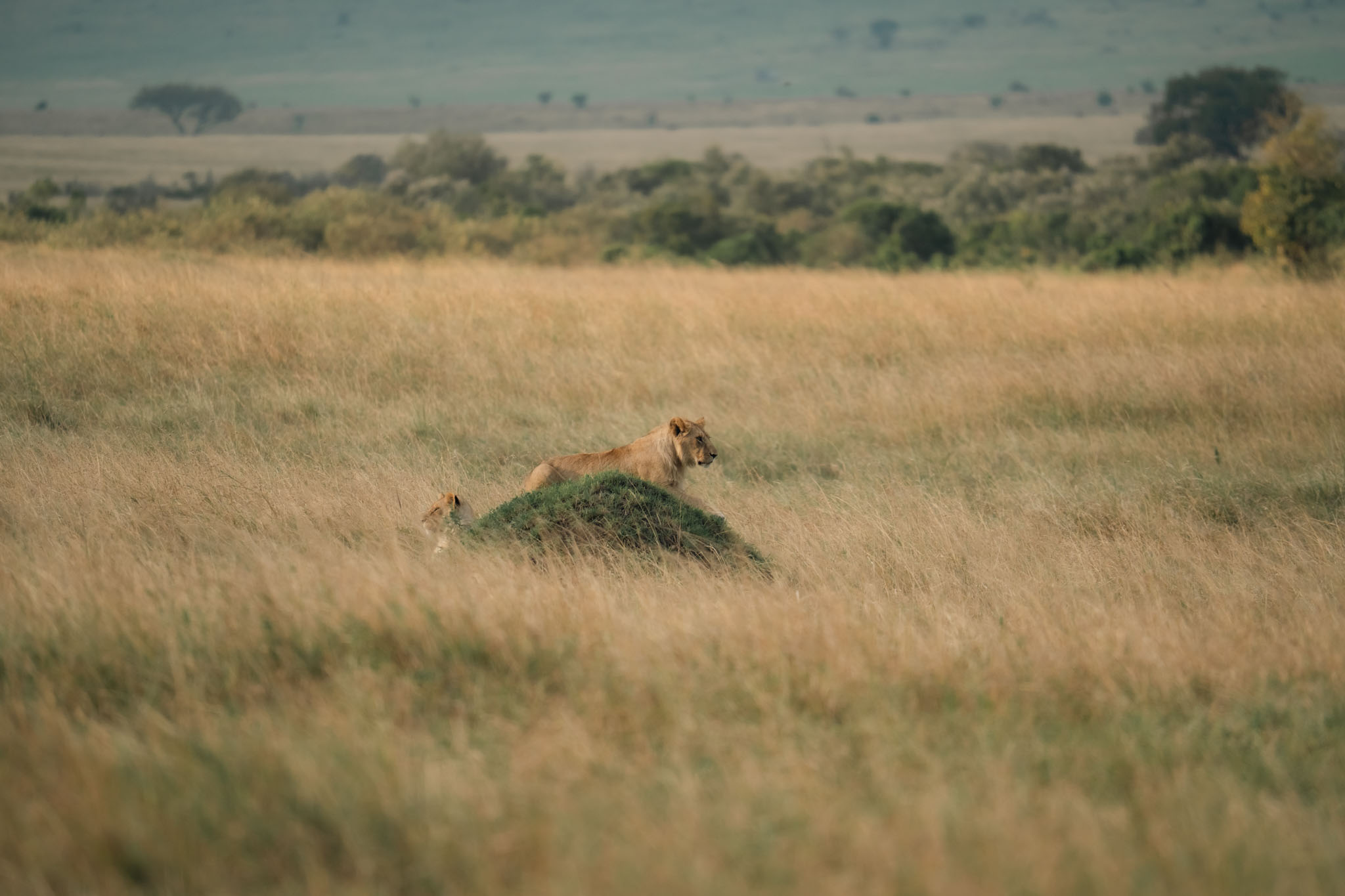
Table of Contents
Why Kenya and Tanzania Are Best for Safari First-Timers
The Perfect Introduction to Africa’s Culture and Wildlife
I once read that African culture is strongest in the East. And after visiting Kenya and Tanzania, I couldn’t agree more. This region captures everything I imagine Africa to be. Wild, soulful, and full of life.
Kenya and Tanzania are home to Africa’s most famous national parks and game reserves, like the Masai Mara and the Serengeti, where wildlife roams freely across endless golden plains.
But beyond the safaris, what truly sets East Africa apart is its people and culture. You can meet the Maasai tribes of Kenya and Tanzania, whose century-old traditions still thrive today, visit villages with traditional homes, and experience an authenticity that feels rare in our modern world.
Easy Safari Planning for First-Timers
Take it from me. Kenya and Tanzania are the best places to go on safari if it’s your first time. When I started planning this trip, I honestly thought it would be complicated. But it turned out to be surprisingly easy! Both countries have well-established safari routes, and have tons of reliable local operators offering options for every budget.
What I love most is that you don’t have to stress over the nitty-gritty. Accommodations, park fees, daily game drives — all of that can be handled for you if you book through a safari tour operator.
Kenya and Tanzania Combo Safari (just do it!)
Both Kenya and Tanzania offer incredible safari experiences that give you front-row seats to the Great Migration. And here’s a pro tip: doing a combo safari actually increases your chances of catching the migration in action.
When we did our trip in August, we missed the river crossing in Kenya, but once we crossed the border into Tanzania, we saw it all unfold in the Northern Serengeti. Talk about perfect timing! So if you want to make the most of your safari on a budget and witness Africa’s greatest wildlife show, combining these two countries is definitely worth it.
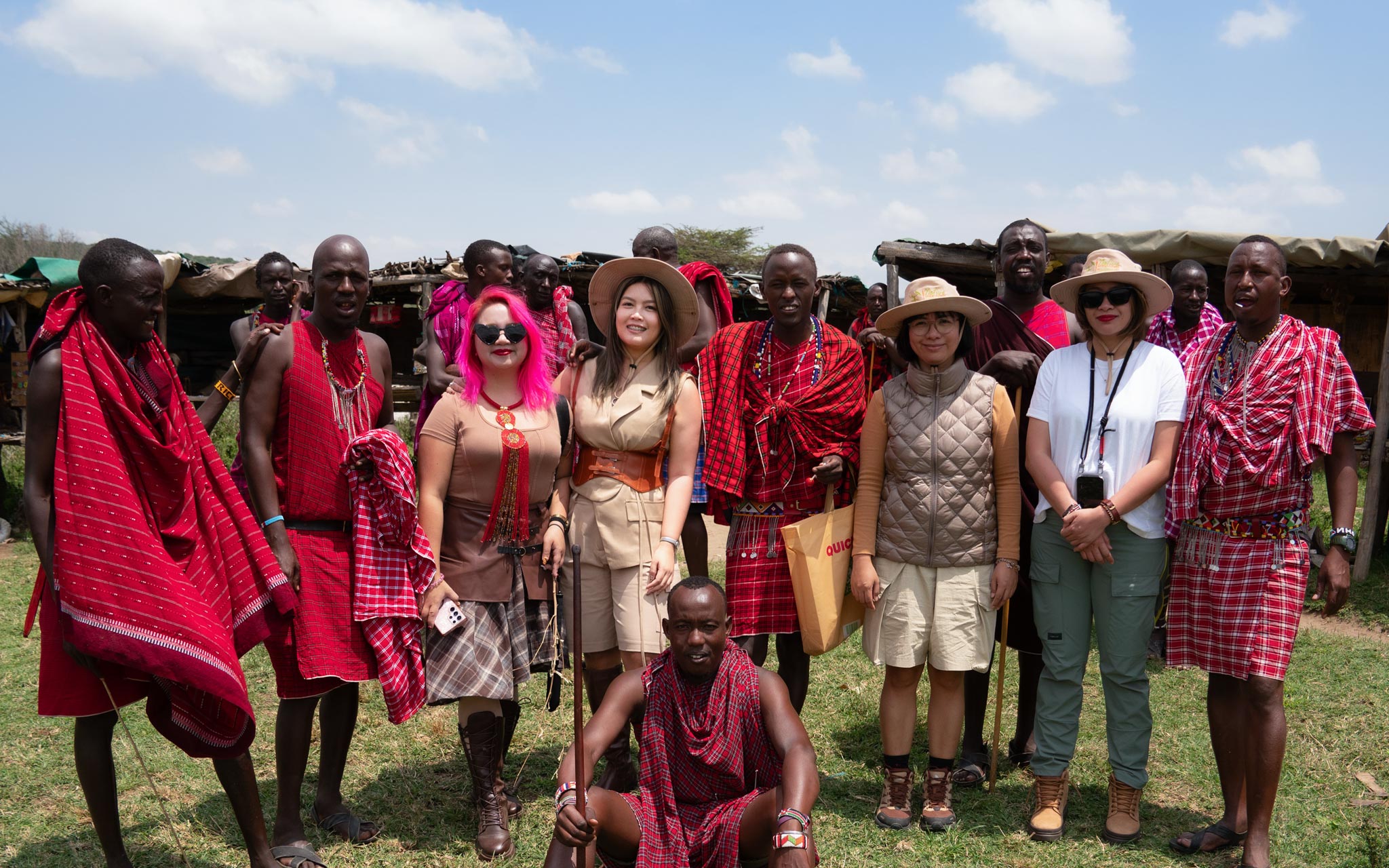
How Much Does a Safari Cost?
Budget vs. Mid-Range vs. Luxury Safaris
Think of safaris like flight classes — economy, premium, and business. A budget safari usually means joining a small group tour, staying in tented camps or simple lodges, and using shared safari vehicles. If you’re doing a safari on a budget in Kenya or Tanzania, expect to spend around $200–$350 per day.
Mid-range safaris offer more comfort. Nicer lodges, fewer people per vehicle or even private vehicle, and better meal options. Expert to pay around $400–$450 per day.
Then there’s luxury safaris, where everything is personalized. Private game drives, high-end lodges with infinity pools, and gourmet meals in the bush. Instead of long drives between parks, you’ll hop on charter flights that land right inside the reserves.
Of course, all that comfort comes with a price. Luxury safaris booked through local operators usually start around $600 per day, go up to $1,500, and can even reach $5,000 or more for ultra-exclusive experiences.
Yes, You Can Do a Private Safari on a Budget
Yes, you read that right. You don’t need to splurge to enjoy a private safari. The trick? Create your own group of four to six people. That way, you can split the cost while still having the entire safari jeep to yourselves. Trust me, you’ll be spending a lot of time together. In the vehicle, at meals, even in camp. So it’s way better to travel with people you actually like.
If you’re traveling solo or as a couple, expect to spend around $500 per day for a private safari on a budget — since you’ll be covering the full vehicle and guide costs on your own.
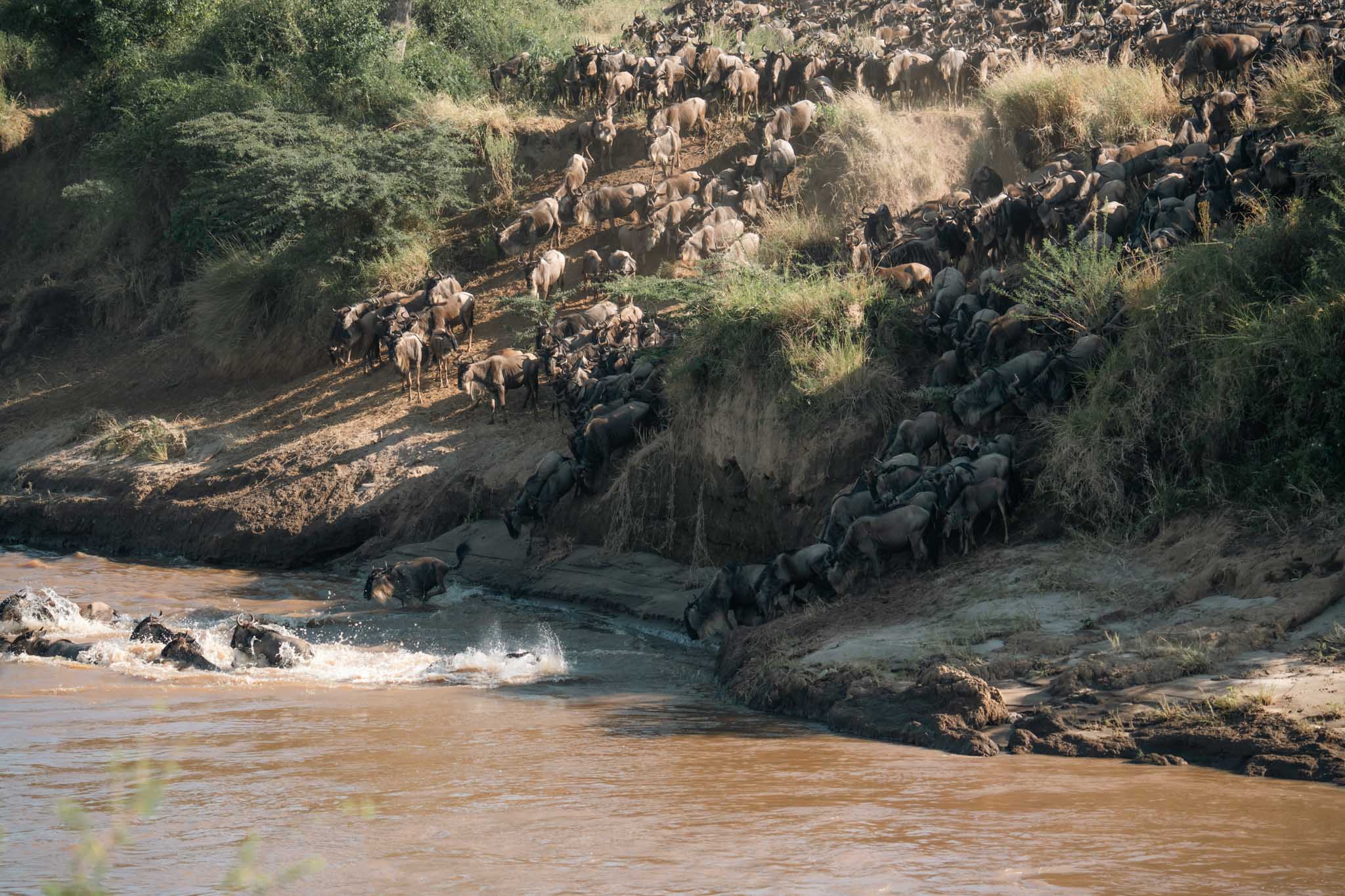
How much we paid for a Private Safari in Kenya and Tanzania
To give you an idea of the cost, here’s what we paid per person: $1,095 for a 4-day Kenya safari and $2,971 for a 7-day Tanzania safari. Both were private budget safaris with my four friends. We also added optional tours — a Maasai village visit in both Kenya and Tanzania, a quick Lake Naivasha side trip in Kenya, and a night game drive in Tanzania. The only other extra expense was the $10 daily tip for our guides.
Disclaimer: I was able to score an early booking discount (around $300 off for Tanzania) since I booked the safari in December 2024 for August 2025 travel. So yes, planning ahead really pays off when doing a safari on a budget.
How to Choose the Right Safari Type
When planning a safari on a budget, one of the first big decisions you’ll need to make is how you want to experience it. I’ve looked into different options, and here’s my honest take based on my own experience.
Self-Drive Safari (May Not Be the Best for First-Timers)
While driving yourself across Africa sounds like the ultimate adventure, it’s not exactly beginner-friendly. You’ll need to navigate rough, unpaved roads, understand park rules, and know how to track wildlife. All while ensuring you don’t get stuck in the middle of nowhere. For first-timers planning a safari on a budget, I’d say skip this option for now and go with something a little less stressful.
Safari with a Local Company (My Choice)
This is the option I personally went for. Local operators offer the best value for money and know the parks like the back of their hand. They handle everything from your accommodation to game drives, meals, and park fees.
For your first safari, I suggest going with locally owned companies. It’s one of the best ways to support local communities and make sure your money goes directly to the people who make your trip unforgettable. Here are the safari tour companies I personally used and loved:
International Travel Company
Booking through an international company is definitely the most convenient option. But this convenience comes with a higher price tag. International agencies often subcontract to local operators anyway.
If you’re confident booking online and comfortable communicating with local operators (most are very responsive on WhatsApp or email), you can easily skip the middleman and save hundreds of dollars.
Travel Booking Sites
If you’re short on time or just want something straightforward, booking through travel platforms like Viator or GetYourGuide can be a good option. These sites let you browse hundreds of safari options, compare prices instantly, and read verified reviews from other travelers.
The catch, though, is that these platforms often work with third-party local operators. So you’re still essentially booking with a local company, just with an extra middleman in between. That means you might end up paying a little more compared to booking directly.
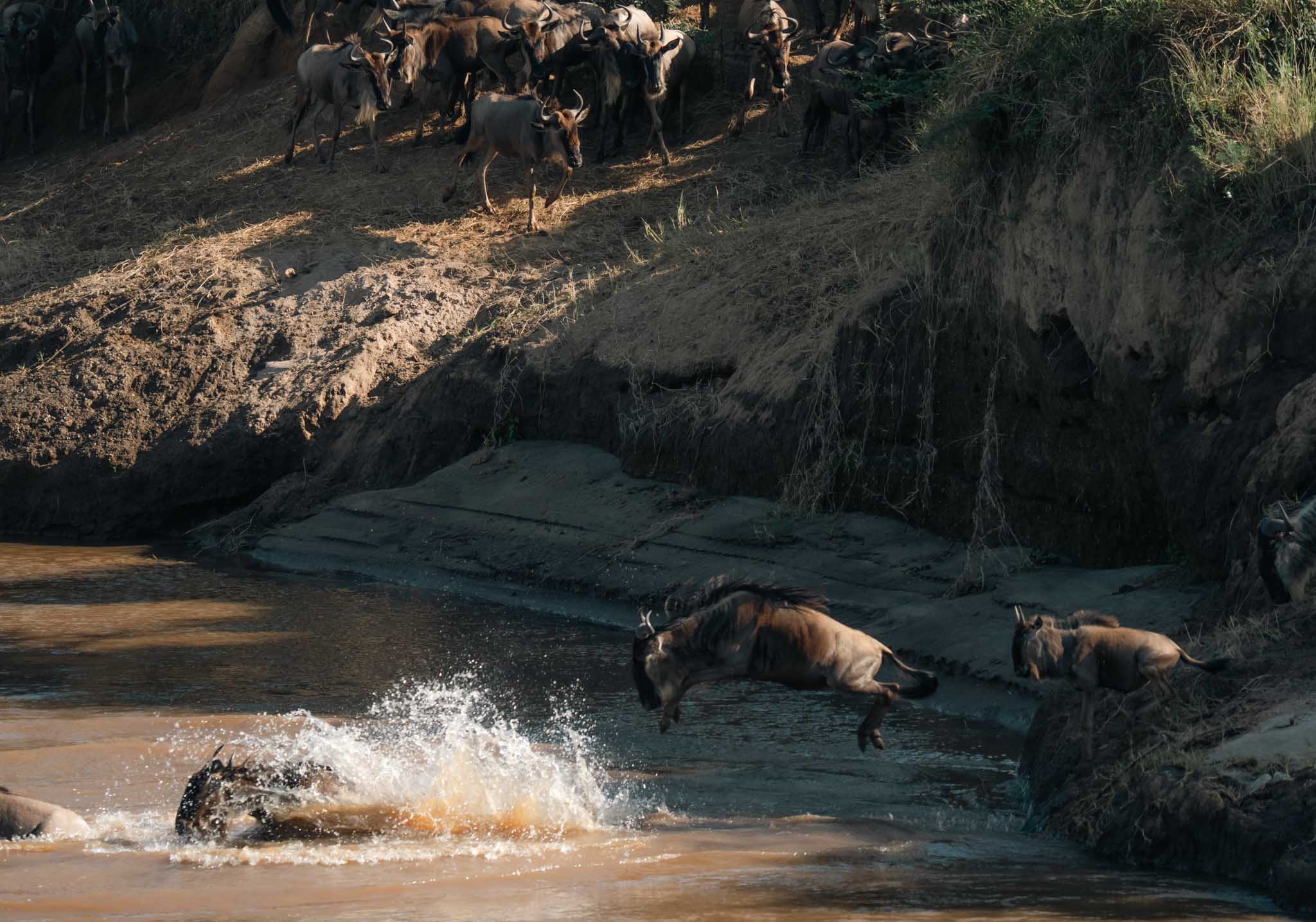
How to Save on Flights for Your Safari on a Budget
One of the biggest chunks of your travel budget will go to flights. To score budget flights to Kenya and Tanzania, I recommend starting your search early (at least 6 months) and using flight comparison sites like Skyscanner and Google Flights. These tools make it easier to track fare changes and spot cheaper days to fly. If your dates are flexible, even a one- or two-day shift can make a huge difference.
If your goal is to witness the Great Migration, expect slightly higher fares from July to October. Flights during this period are in demand, but with early booking, and a bit of patience, you can still keep your safari on a budget.
I initially considered booking a round-trip ticket from Manila to Nairobi with AirAsia since it looked cheaper at first glance. But for a once-in-a-lifetime trip like this, I didn’t want to risk it. Flight delays and cancellations happen too often with budget carriers, and missing a safari connection would be a nightmare.
In the end, I chose reliability and comfort over risk. After weeks (okay, maybe months) of fare watching, I finally scored an open-jaw flight from Manila to Nairobi and Kilimanjaro back to Manila via Doha, Qatar, with Qatar Airways. The ticket cost me ₱65,000 (around USD 1,100), a solid deal considering it was peak season. It might not be the cheapest option out there, but the peace of mind was absolutely worth it.
Remember, spending a little more on a trusted airline can save you the stress of missed connections and let you focus on what really matters… your African Safari.
Where to Stay on a Budget Safari
When you get a quote from a safari operator, they’ll typically include a few lodging options. From budget tented camps to mid-range lodges and luxury camps — each with its own price tag. This setup gives you the freedom to mix and match depending on your budget and preferences.
For our trip, for example, we stayed in a combination of tented camps inside national reserves and cozy mid-range lodges. All the places we stayed at had comfortable beds, private bathrooms, hot showers, and delicious buffet-style meals. It honestly didn’t feel “budget” at all.
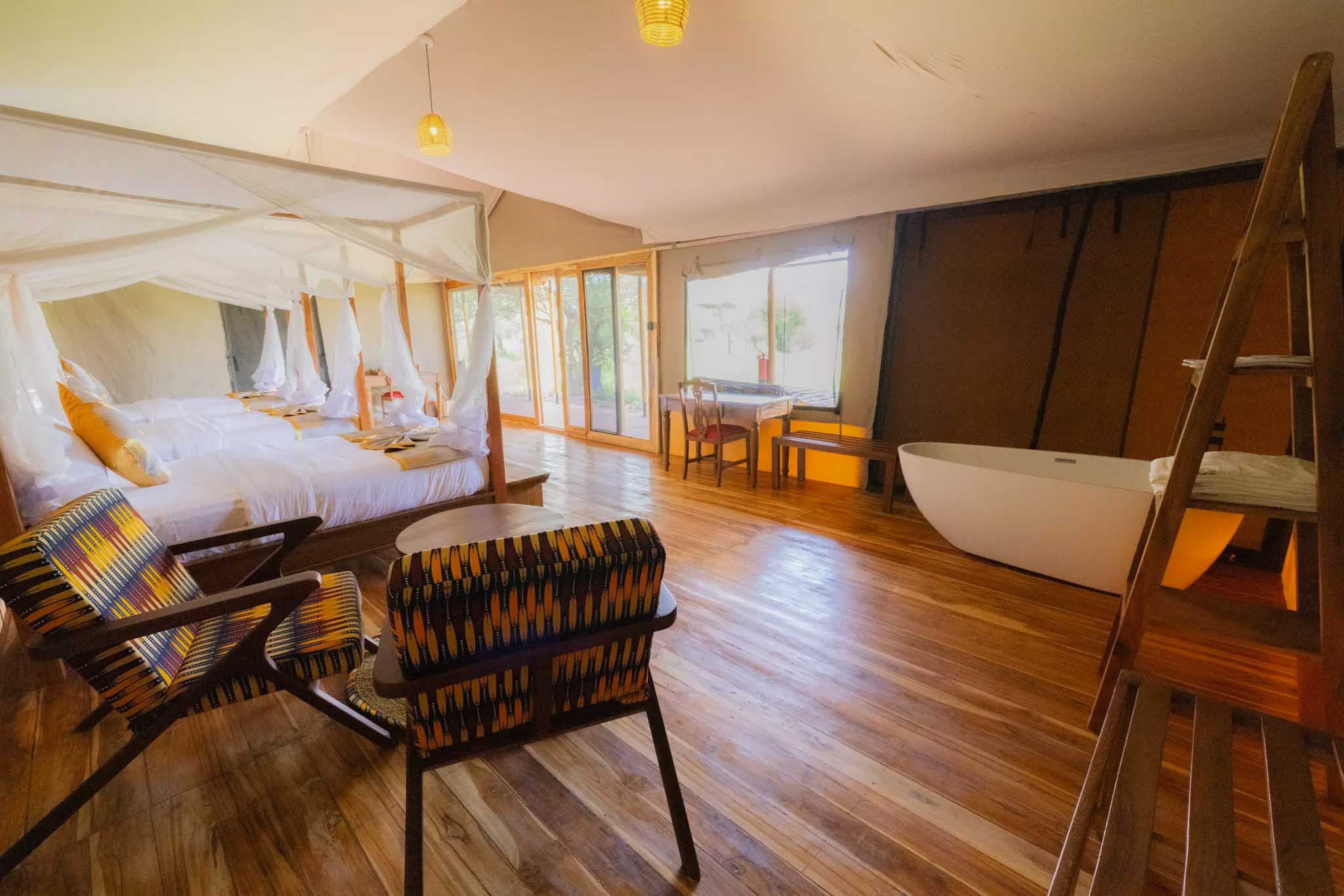
Affordable Lodge and Camp Options
If you want something a bit more comfortable while still budget-friendly, go for mid-range lodges or permanent tented camps, which often come with ensuite bathrooms, better amenities, and even swimming pools.
Now, if you’re really trying to cut costs, camping in a ground tent with a shared communal bathroom is usually the cheapest form of safari accommodation.
However, I’d personally recommend against this. Safaris can be quite physically demanding. You’re often up by 6 a.m. or earlier and out all day on game drives. So, it’s important to have a comfortable base to rest, shower, and recharge before another full-on day of adventure. Trust me, after a long, dusty day on the savannah, a proper bed and a hot meal make a world of difference.
Tips for Scoring the Best Accommodation Deals
Here’s my biggest tip: book early. The best budget-friendly camps and lodges get snapped up quickly, especially during the Great Migration season (July to October).
Also, don’t hesitate to ask your operator if they can swap out a lodge or mix accommodation types. Most are flexible and will happily adjust your itinerary to fit your budget.
Before finalizing, I highly recommend checking reviews online. Google, Tripadvisor, and even social media pages are great for seeing what past travelers experienced. For our safari, I checked reviews for every lodging option suggested to us, and most of them had excellent ratings — around 4 stars on Google.
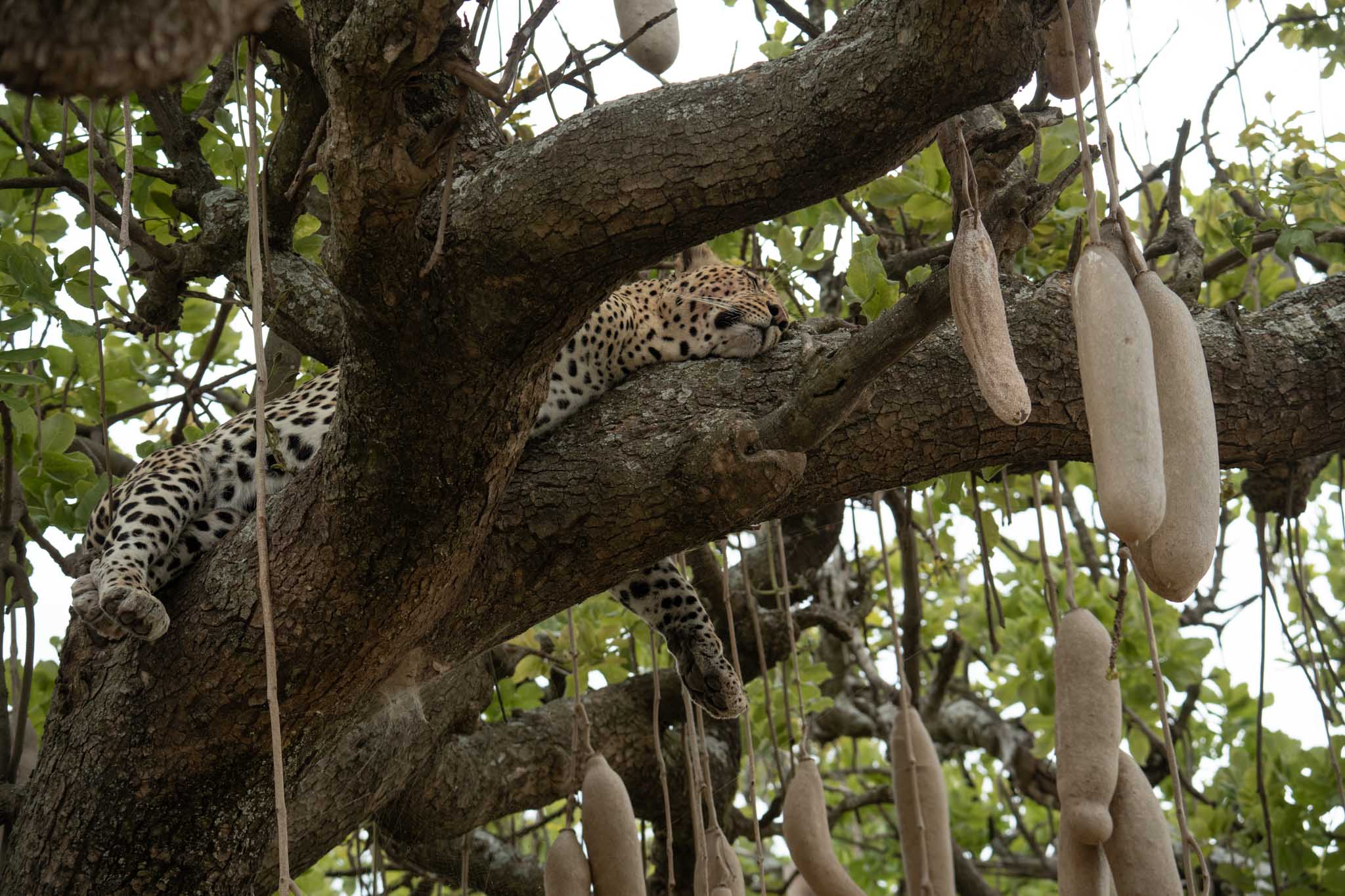
What to Expect on a Budget Safari
Going on a safari on a budget doesn’t mean sacrificing the experience. In fact, many of the most memorable moments, the wildlife sightings, are exactly the same as a higher-end safari. What changes is how accommodations, mode of transport between the parks, meals, and extras are packaged.
To give you a concrete example, here’s what was included in our 7-day Tanzania safari with Safari Soles:
- Park fees
- All scheduled activities
- All accommodations
- Professional guide
- All transportation
- Taxes / VAT
- Roundtrip airport transfer
- Meals (with special dietary options like vegetarian, vegan, gluten-free, Halal)
- Bottled water
- Air ambulance medical evacuation
- Safari jeep 4×4 with pop-up roof, radio, cooler fridge & charging ports
- Use of binoculars
- Fly & bug spray
- Beers & wine on the jeep
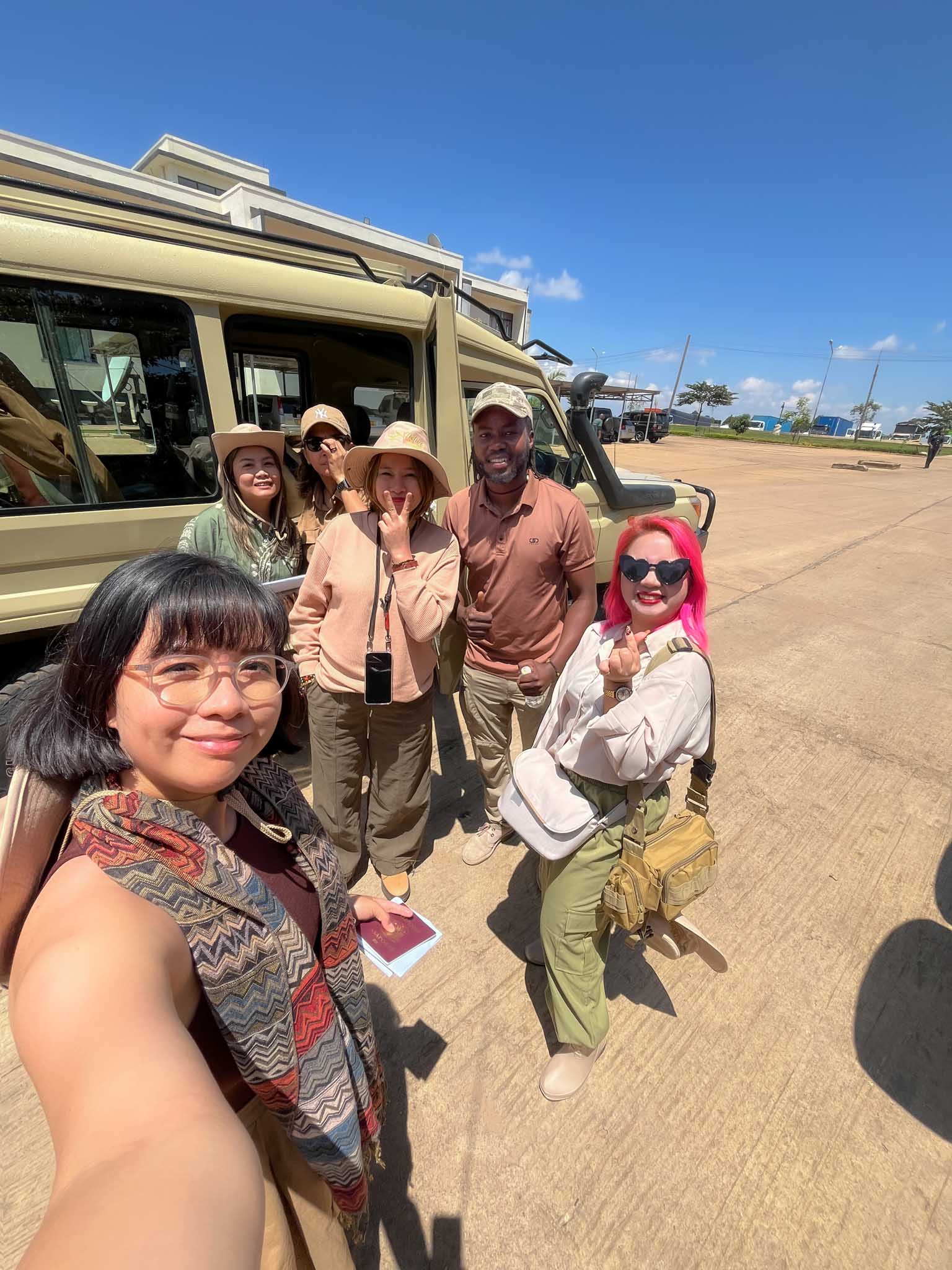
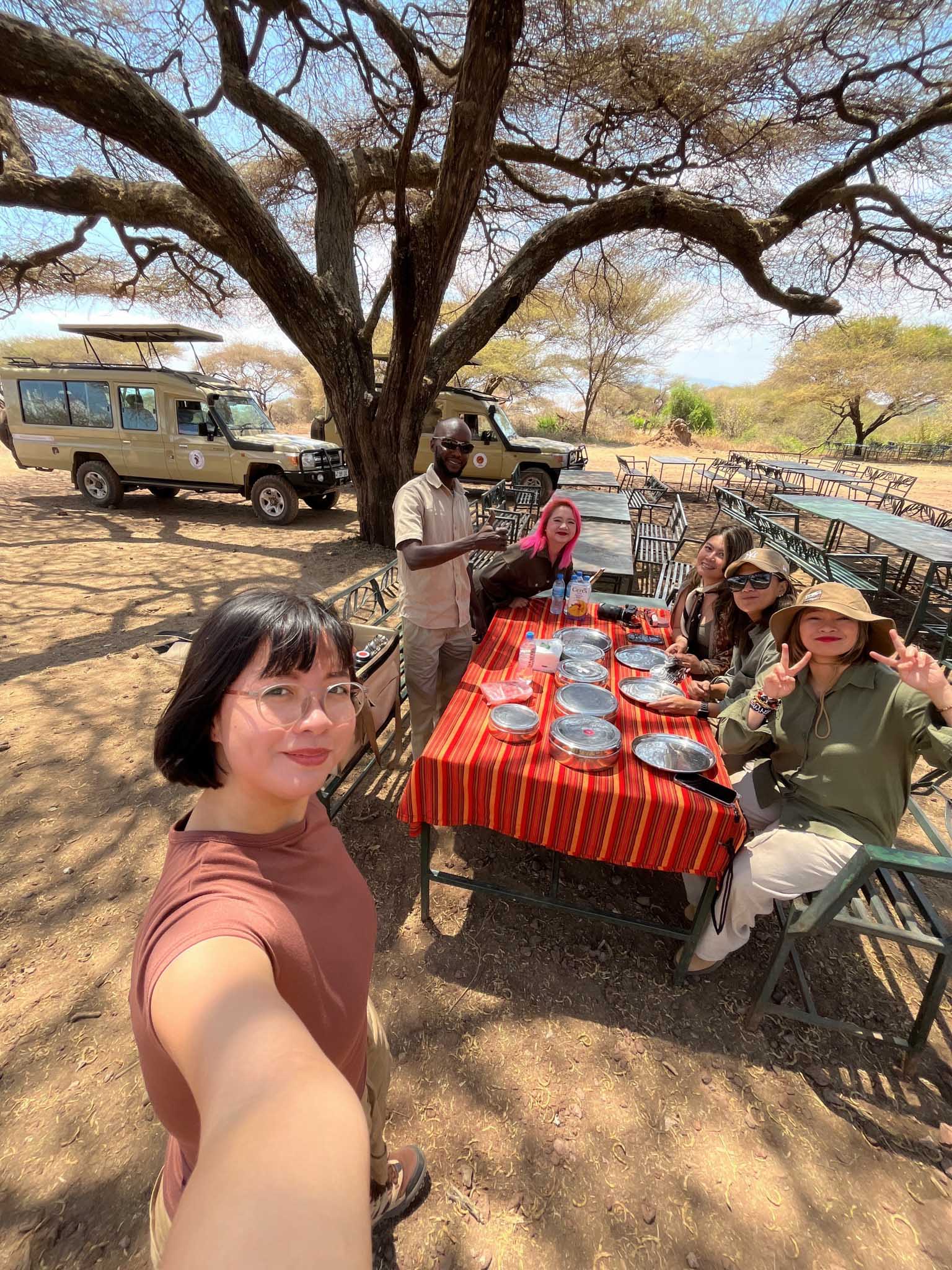
Final Thoughts: Is a Budget Safari Worth It?
A resounding yes! One of the biggest misconceptions about a safari on a budget is that it means “roughing it.” From my own experience, budget options can still be incredibly comfortable. On our Kenya and Tanzania safari, we stayed in tented camps inside the national parks, complete with private bathrooms, hot showers, and cozy beds. Our safari jeeps came fully equipped with radios, chargers, and even a mini-fridge. Small comforts that make long game drives so much more enjoyable.
The beauty of a budget safari is that it’s all about getting the most value without paying for luxury extras you might not even need. And the best part? Even at budget rates, you still get highly experienced guides. In Kenya with Native Afrika Voyages, we had Brian from Mida Safaris, who brought five years of expertise and a contagious passion for wildlife. In Tanzania with Safari Soles, our guide Mohammed had 20 years of experience and was an absolute master at tracking animals… truly the GOAT.
So yes, you can do a safari on a budget and still have a safe, comfortable, and unforgettable adventure. It’s an experience you’ll still be talking about years later… without breaking the bank. ♥️
Planning your own safari on a budget? I’d love to hear from you! Drop a comment below with your questions, share your safari dreams, or tell me which part of my Kenya and Tanzania itinerary you’d copy. Let’s chat!

